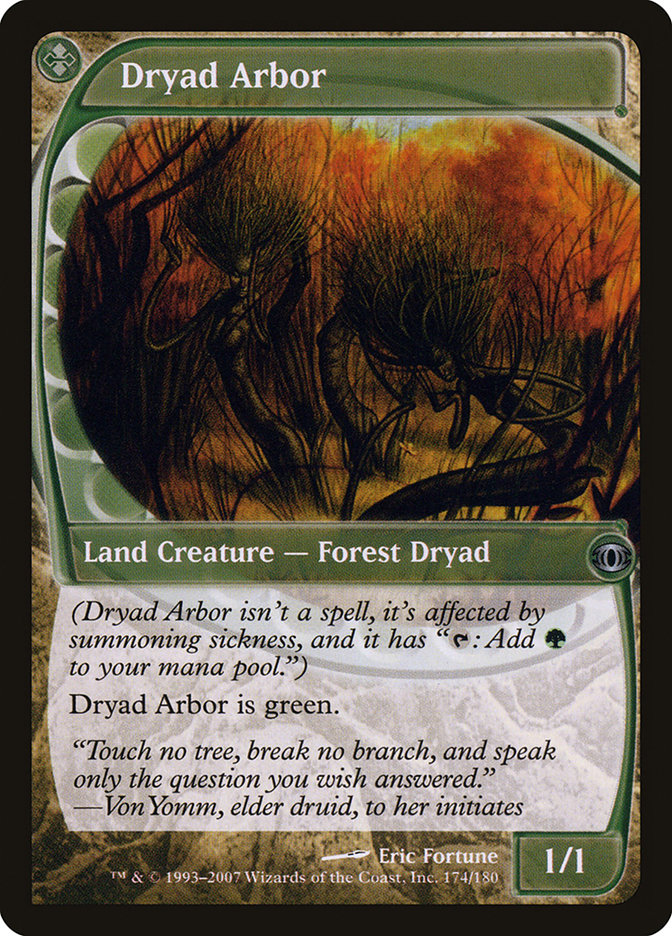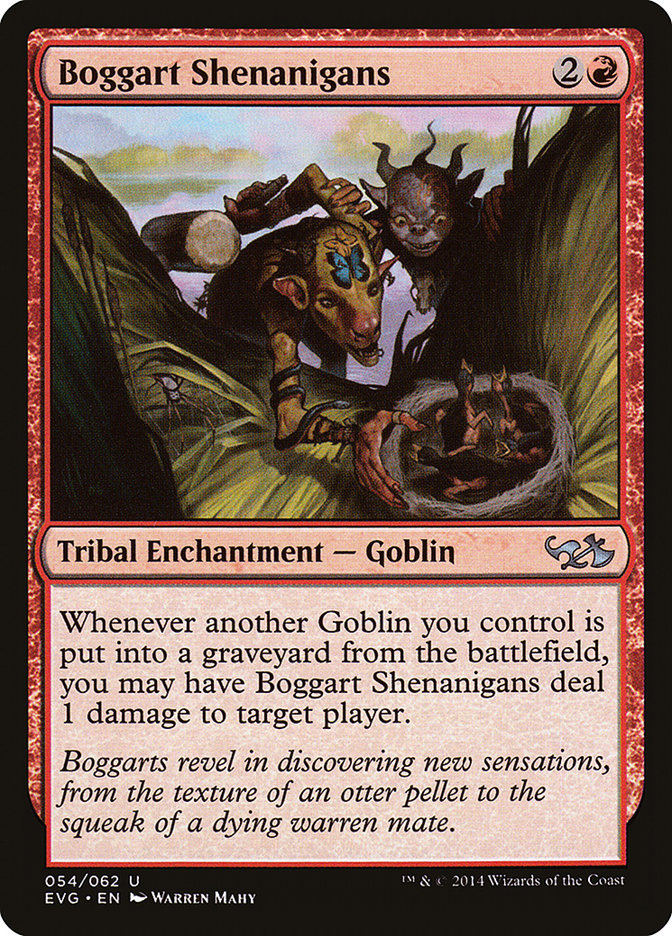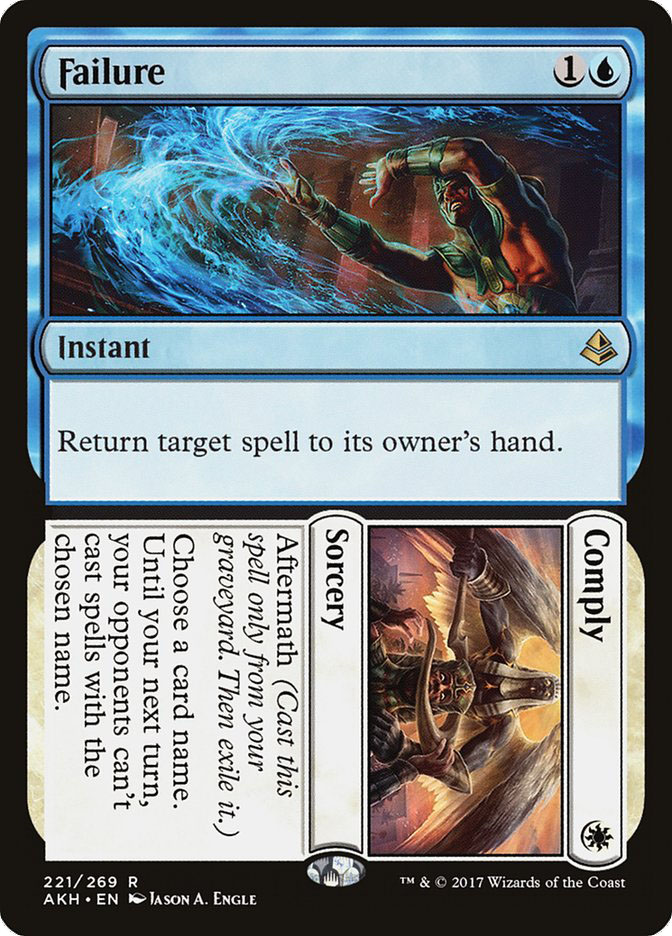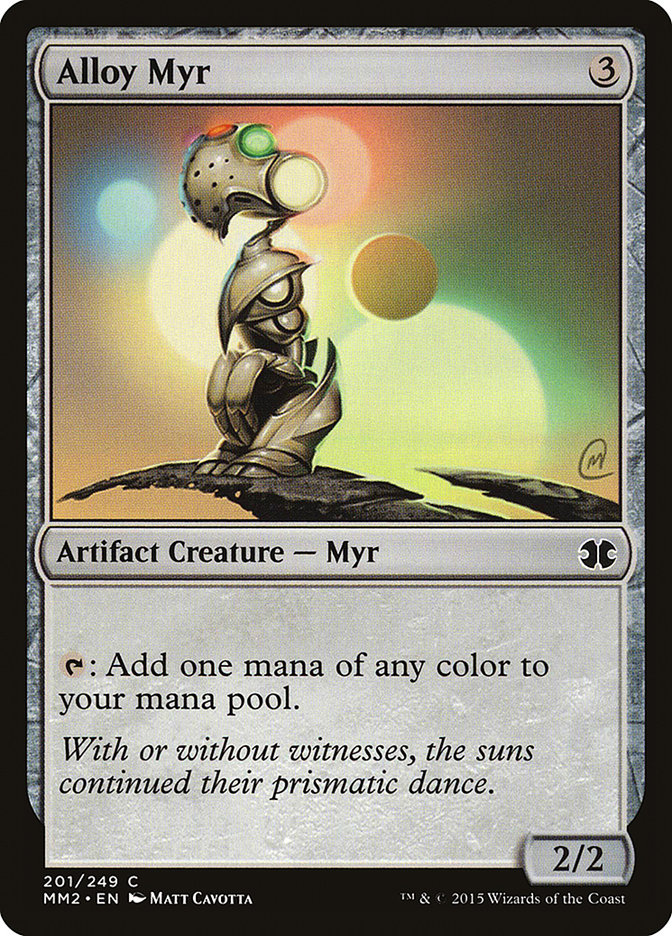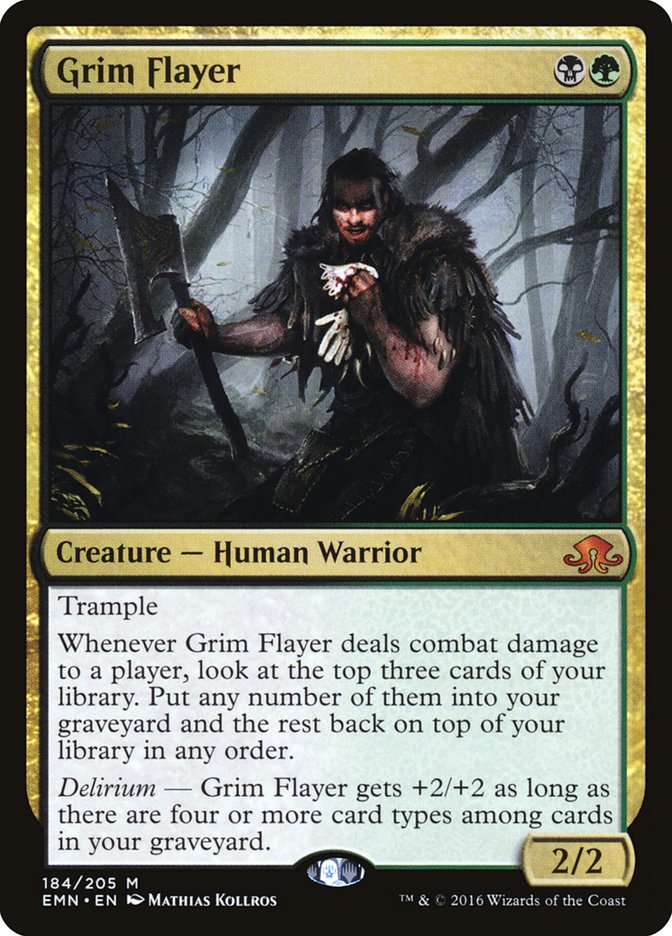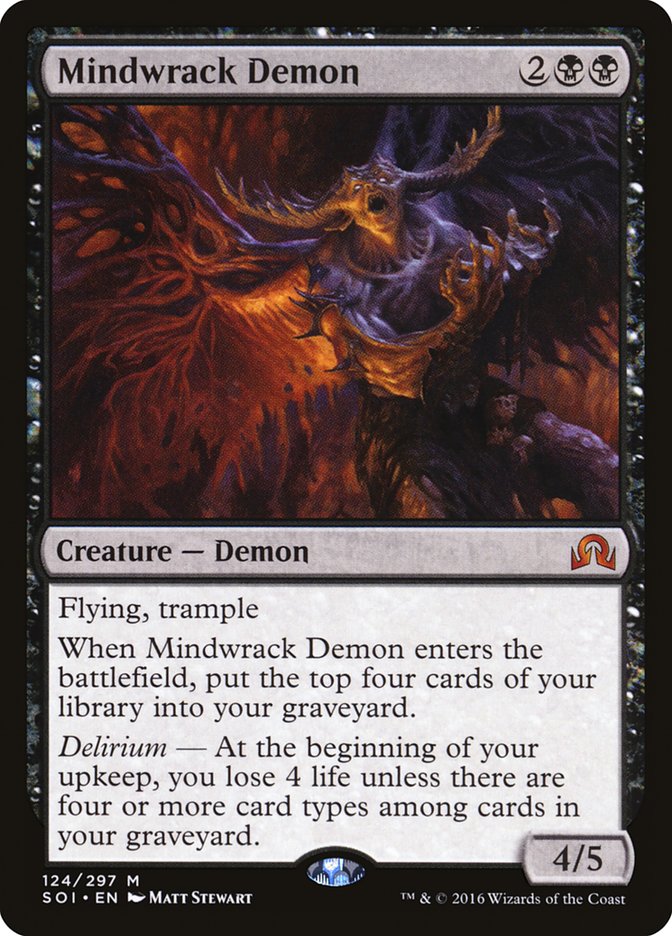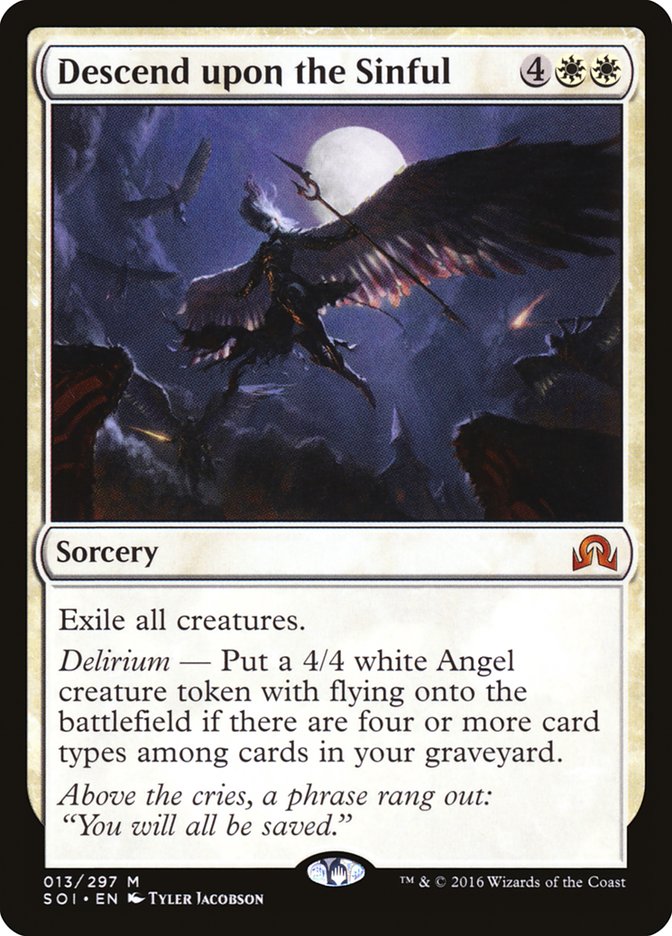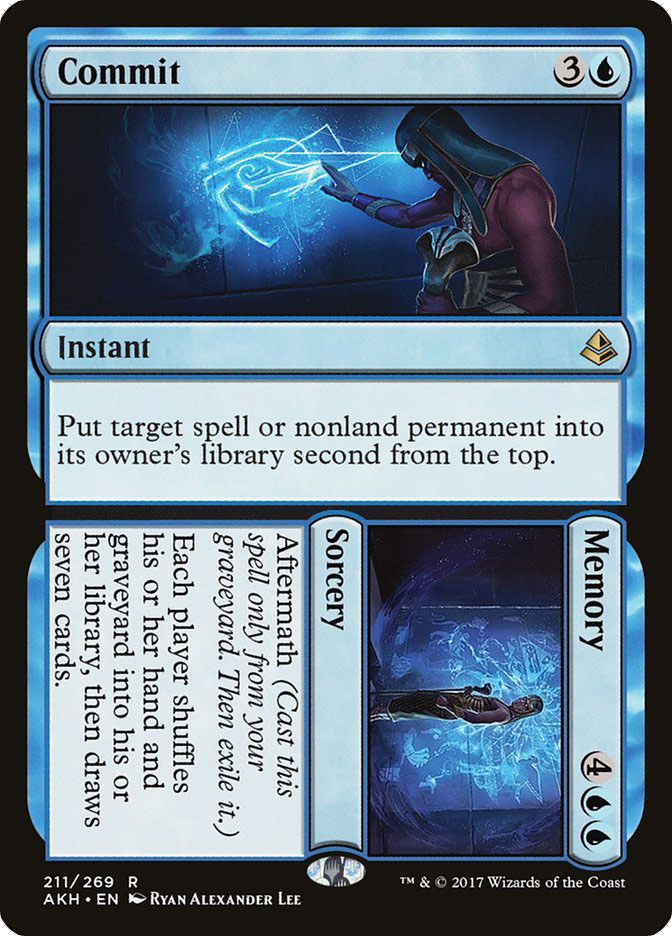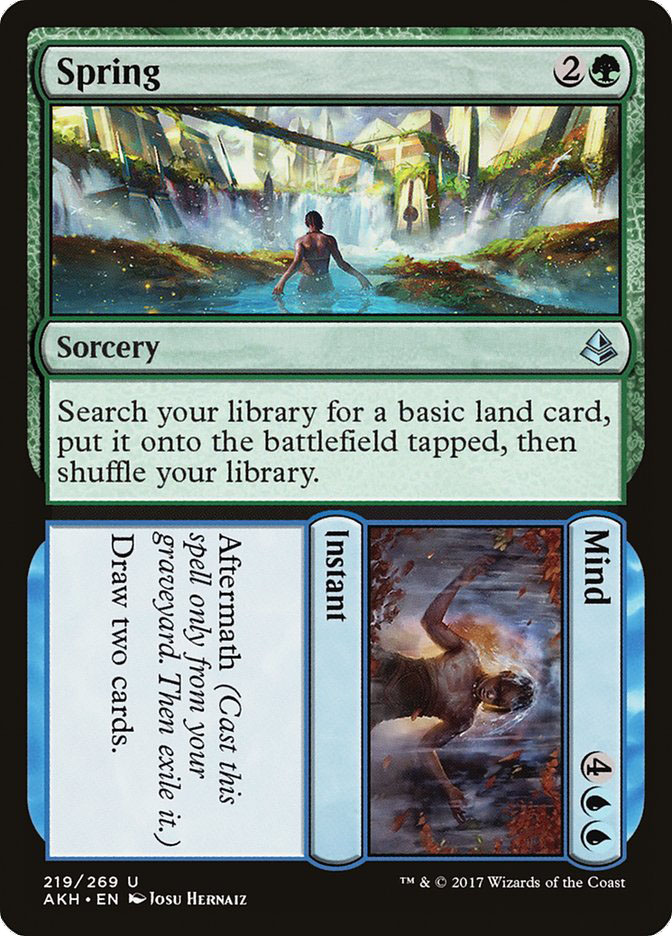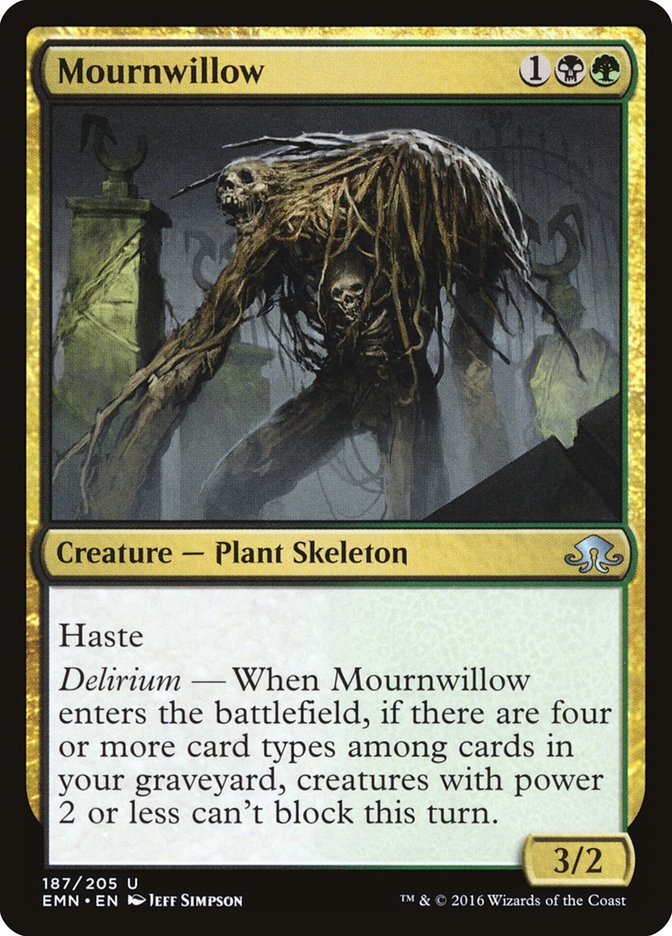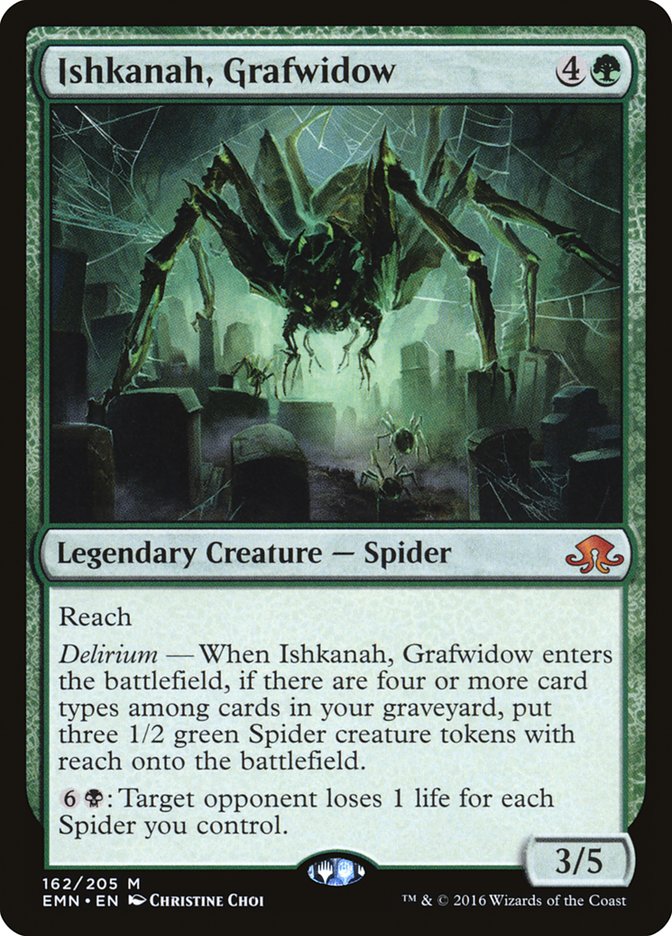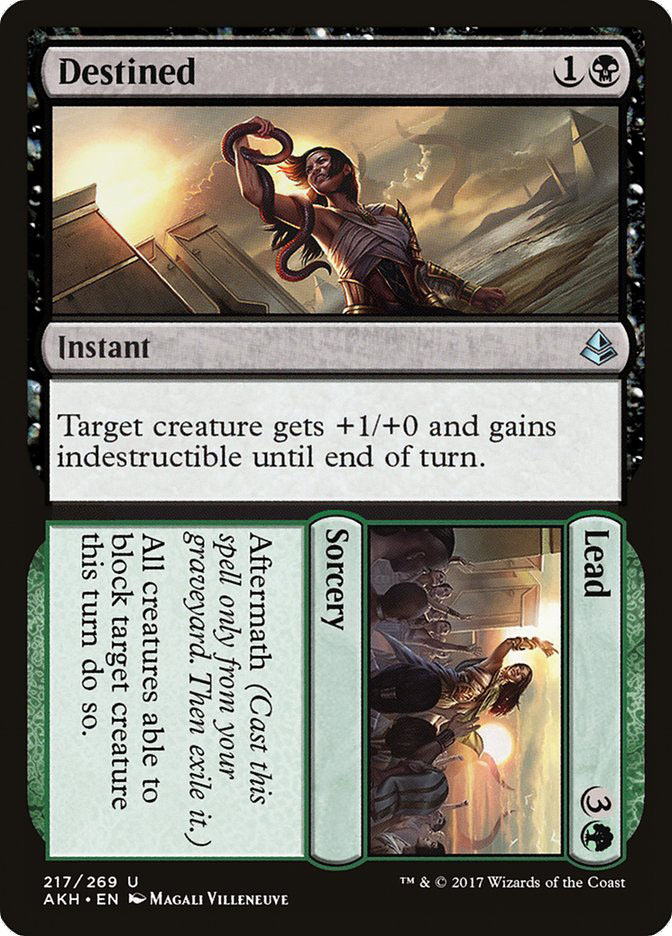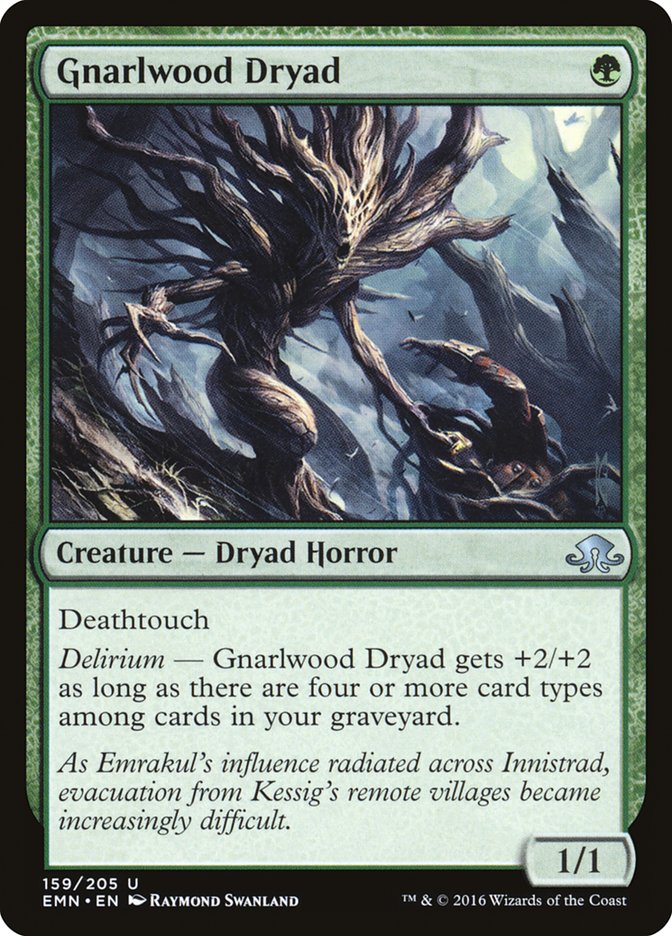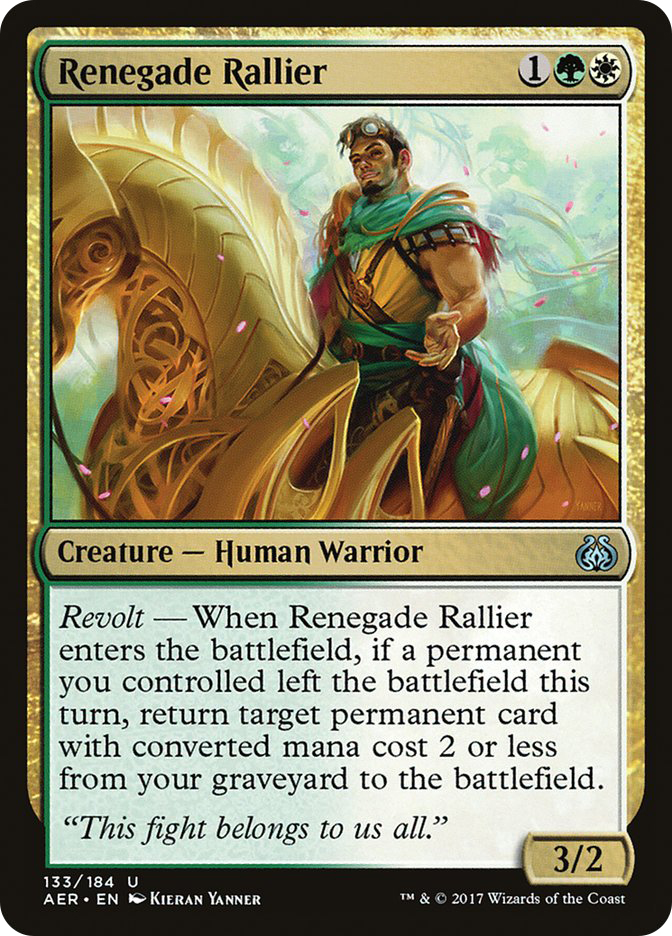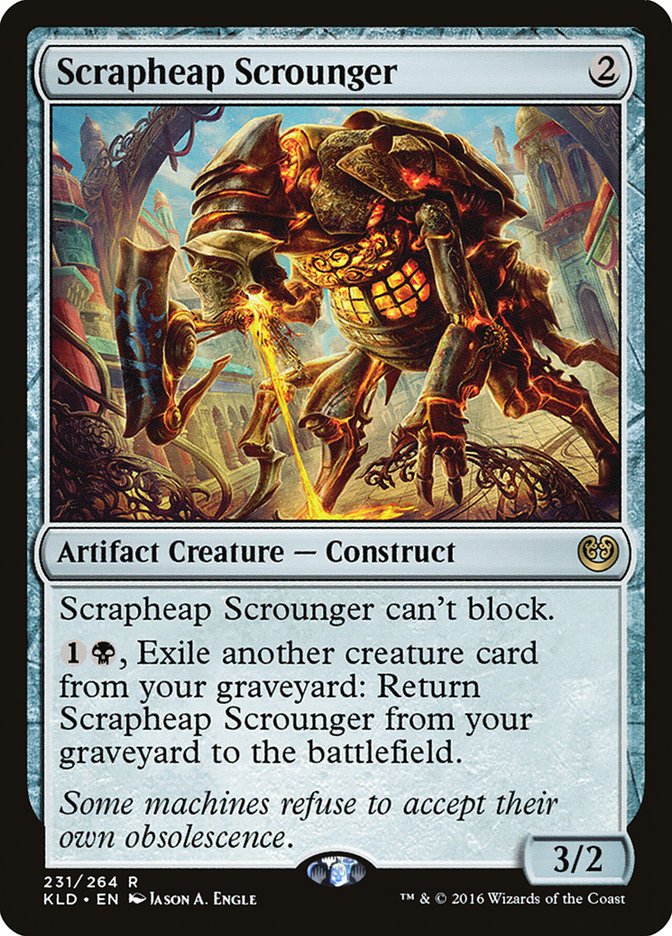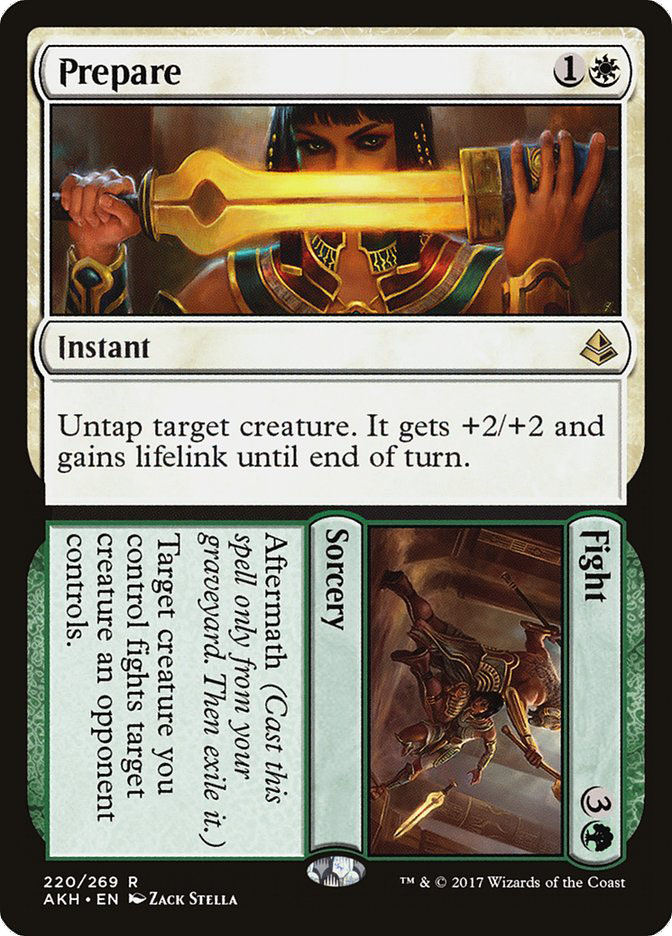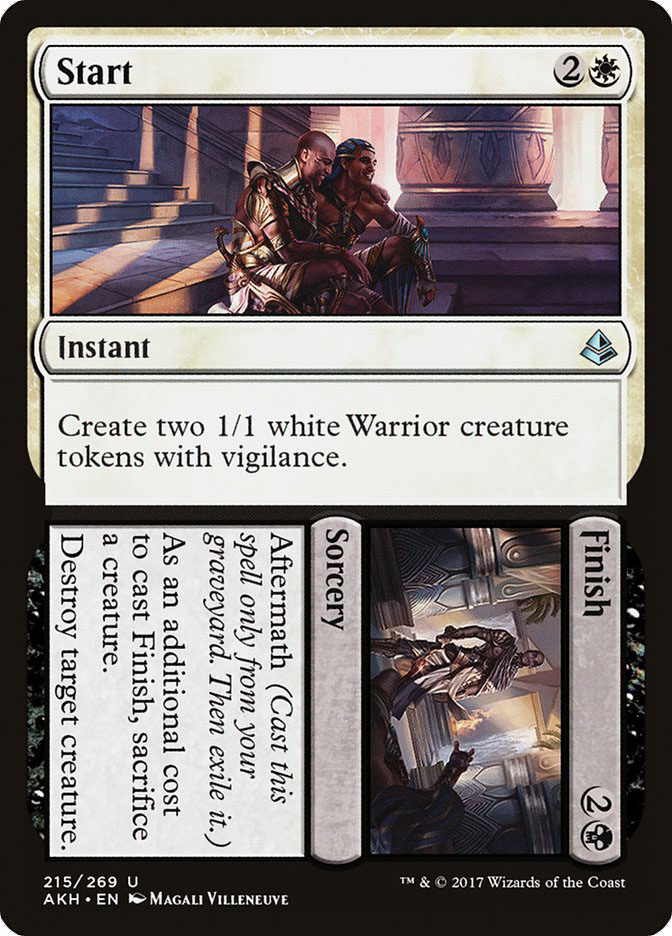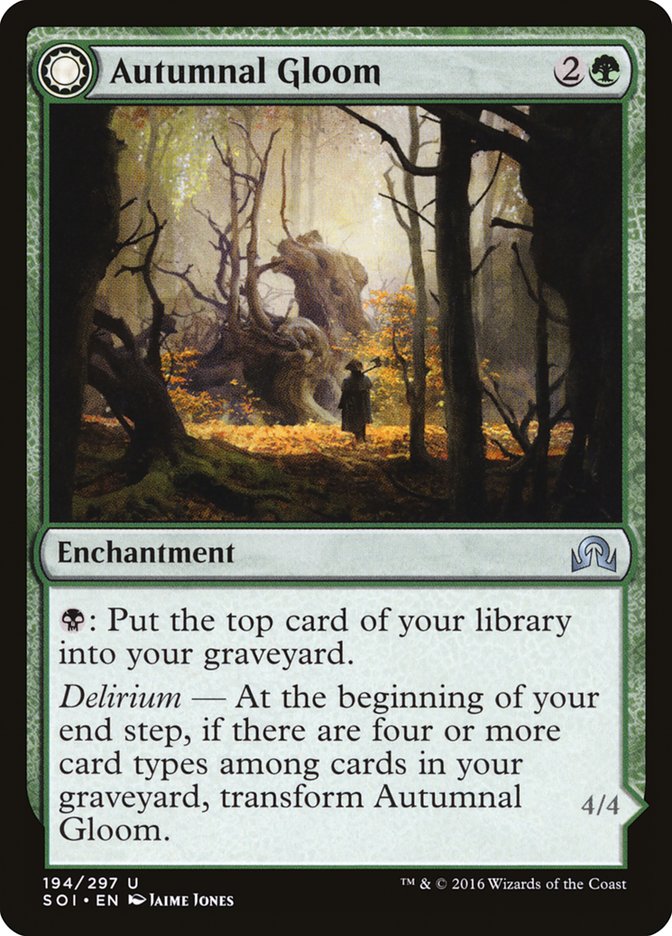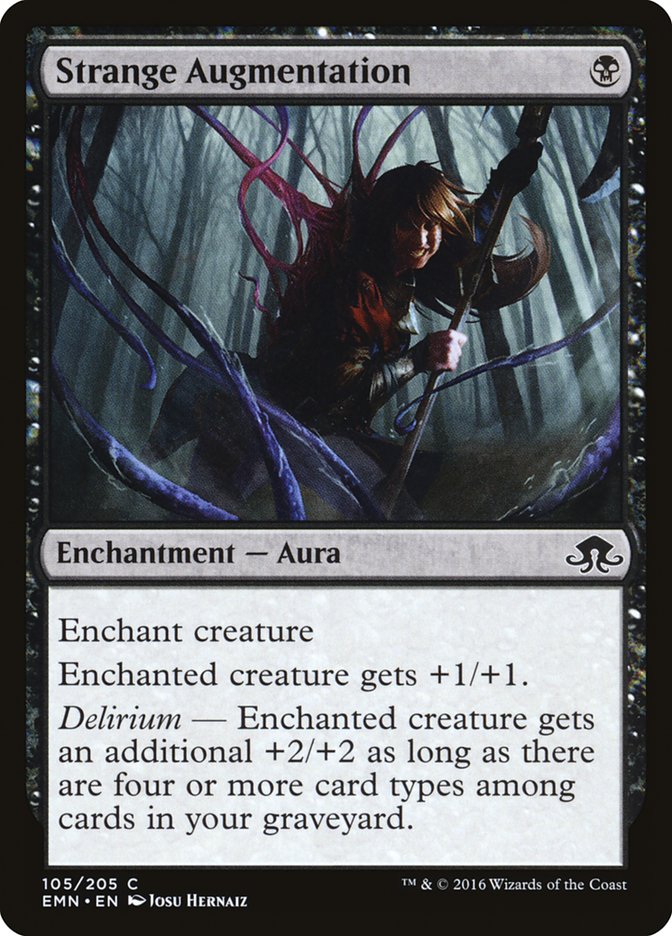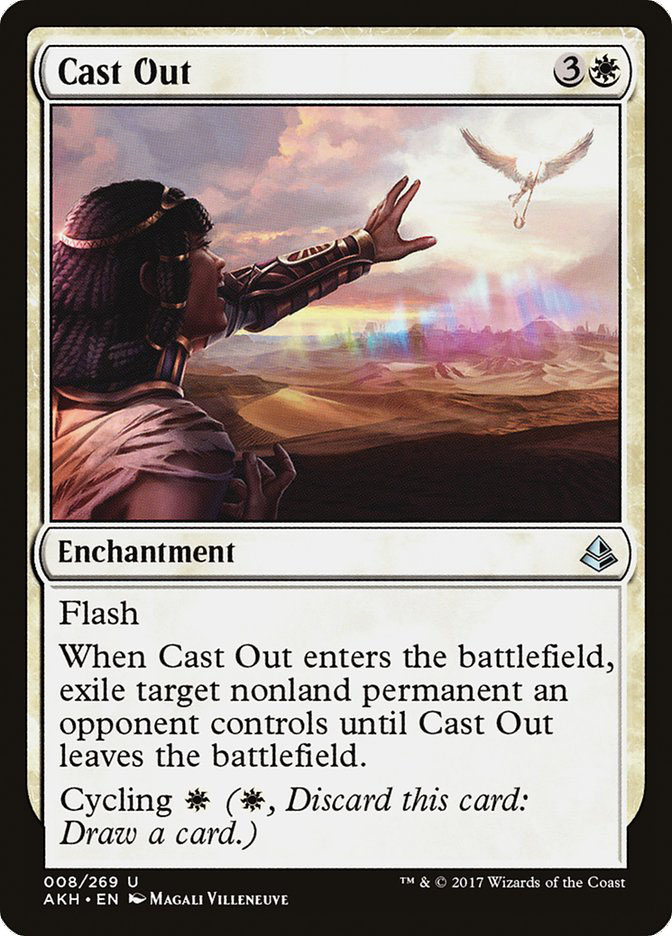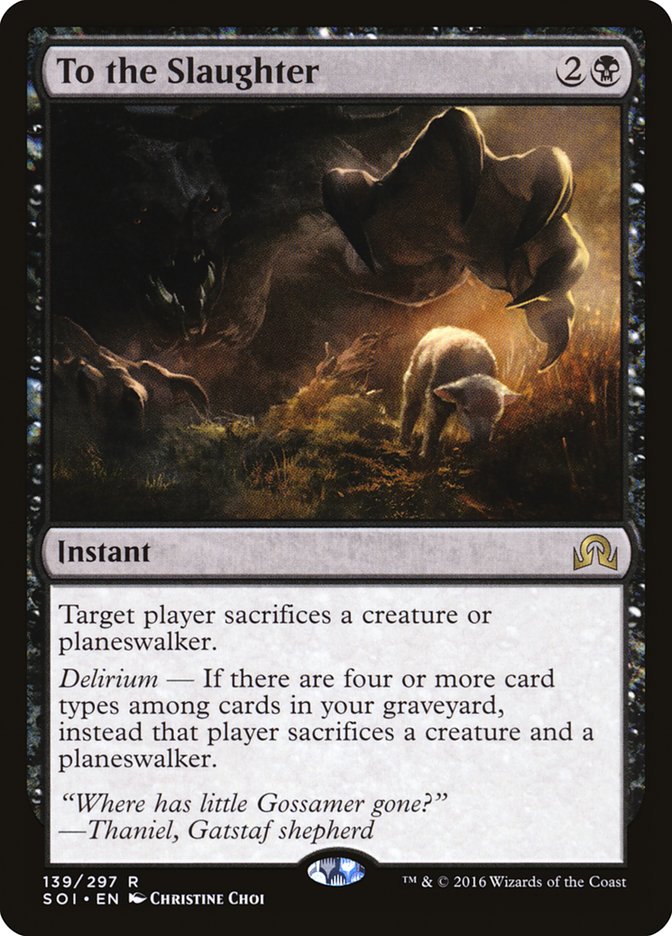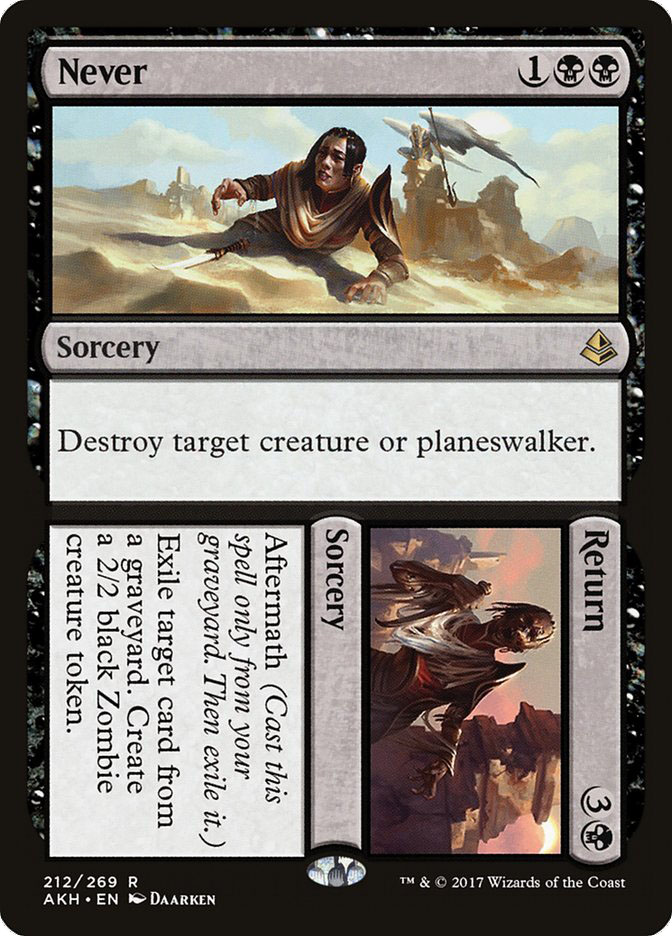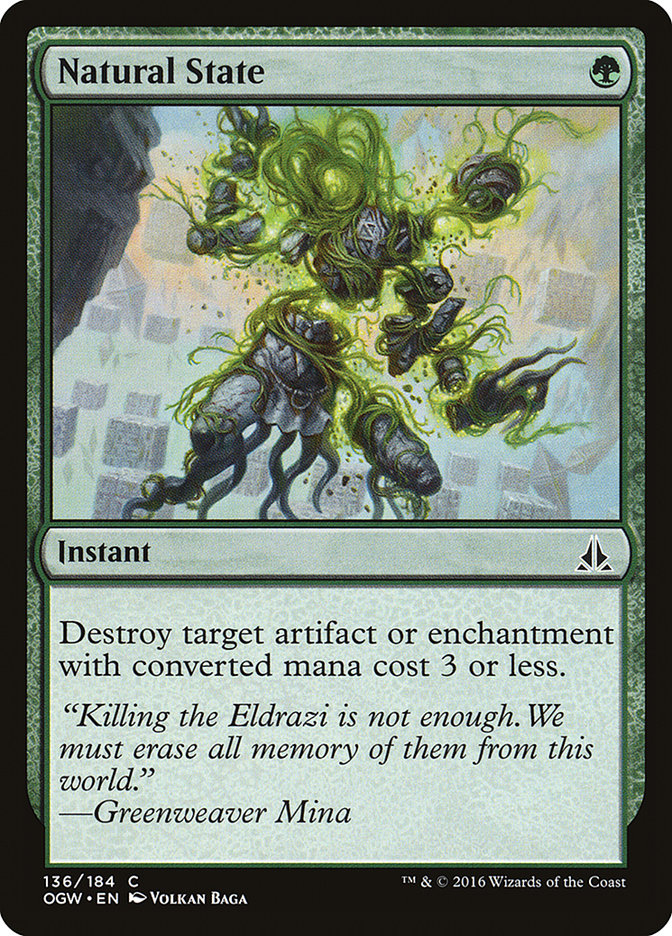At a quick glance, what do these cards have in common?
You’re right! All of these cards have two card types.
Certain cards have cared about those types for a long time; can you believe that Tarmogoyf has been around for eleven years now?
Recently, though, this has come to prominence not just because of one card, but for many.
When delirium first appeared in Shadows over Innistrad, I made no mystery of the fact that I loved the new mechanic. Undercosted, narrow, powerful effects have always been amongst my favorites, and delirium made that possible with ringers like Grim Flayer and Traverse the Ulvenwald.
Delirium’s attractiveness was compelling, but achieving delirium reliably has always been a bit more of a balancing act. Reaching delirium’s four-card-type requirement reliably was almost entirely a function of deck construction rather than luck or sequencing. Your deck had to be designed to get card types into the graveyard and enough variety in your card types that you could even get four types. It took conscious effort to create a delirium deck, and this continues to be the case today.
For us delirium lovers, though, we have a new mechanic in Amonkhet, referenced above, that helps us reach delirium more quickly and with fewer cards: aftermath.
Fifteen aftermath cards were printed in Amonkhet, with the potential for more to appear in Hour of Devastation, and nine of them are both instants and sorceries. While in the graveyard, your hand, or your library, they are both card types at once, but not while on the stack. Thankfully, for delirium, the first one is all that matters.
Unlike a creature, which usually has to die to get to the graveyard, an instant or sorcery lands there after you use it, so by just playing normal Magic, you’ll meet half of the requirements just by casting one simple spell. This is a speedy way to get delirium online, and in a way, some marginal delirium cards might get much better through the use of these new aftermath spells.
These aftermath spells aren’t gimmicks, either; several of them are quite powerful in their own right. We just get to use those with dual status in a new way, stretching the playability of borderline delirium cards.
While delirium cards span every color in Magic, green and black have the largest share between them. The fifteen aftermath cards are spread across each color and color combination, and the green and black one fits our instant and sorcery requirement.
Together, these two colors and the potential for integration of brutal aftermath spells make for a tantalizing deck today.
Creatures (20)
- 3 Mindwrack Demon
- 4 Gnarlwood Dryad
- 1 Ishkanah, Grafwidow
- 4 Grim Flayer
- 2 Scrapheap Scrounger
- 2 Renegade Rallier
- 4 Walking Ballista
Lands (23)
Spells (17)
- 4 Traverse the Ulvenwald
- 2 Autumnal Gloom
- 1 Collective Brutality
- 1 Strange Augmentation
- 3 Destined
- 3 Prepare
- 3 Start
Sideboard

This is a straightforward, combat-trick-oriented deck that has reach in the long game thanks to both delirium activation and the aftermath portion of those one-time spells.
Creatures
These are the creatures that most obviously benefit from delirium, mostly because it says so right in their text box.
Gnarlwood Dryad is a vicious Wild Nacatl with the right setup, and the creature-oriented spells in this deck push that theme forward. Deathtouch is a safe ability; your opponent can’t just chump block it, and you have many tools in this deck to make it a high-pressure, dense threat.
How do I love thee, Grim Flayer? Let me count the ways. Okay, well, I count three. First, this card has trample. The more creature power we can apply, the more terrifying this two-drop gets. The clock this creature creates and its ability to control your delirium and draw step make this a contender in the format, even one in which Fatal Push exists.
Mindwrack Demon is still one of the better ways to stonewall an Archangel Avacyn and Heart of Kiran. Also, because we’re looking at density with aftermath spells, you’re very likely to turn over one of our dual cards and get delirium, safely avoiding that clumsy four life loss. It also has trample, something that’s easy to forget, making power pumping abilities all the better.
Ishkanah, Grafwidow is re-emerging in the format now that we’re looking at spells that have relevance in the late-game again. This legendary Spider remains one of the best armies-in-a-box (or nightmares-in-a-box for arachnophobes) that Standard money can buy. The deck goes long enough that activating its second ability is not out of the realm of possibility, and four life a turn will kill any opponent swiftly.
Walking Ballista pulls triple duty, acting as an artifact creature, a free way to trigger revolt, and as a mana dump later in the game. Scrapheap Scrounger is an easy sacrifice, discard, or mill-over option. Bringing it back is easy with a total of twenty creatures, too. Renegade Rallier, still easily my favorite card from Aether Revolt, plays nicely with most of the deck’s creatures and specifically Grim Flayer, perhaps its most attractive target.
Spells
Destined // Lead is the first one that jumped out at me from a color perspective, but Destined also has hidden text on it: “Counter target spell named Fatal Push, Unlicensed Disintegration, Never, or Cut if that spell targets a creature you control.” Sure, you still take the three from the Disintegration damage, but not losing your creature means you’re holding your tempo, and once that instant of theirs goes to the graveyard, it’s useless. Lead’s effect is almost never worth a card itself, but when you’re looking to alpha strike, you’ll be grateful you’ll have the option to utterly control combat.
Prepare // Fight is perhaps the most green and white aftermath spell possible, combining power and toughness boost with the ability to overly leverage that power both in and out of combat. Prepare is good old-fashioned Moment of Heroism with upside, untapping your most powerful attacker if you need to defend. Fight lets you use that beefed-up creature to smash into another one, letting you gain life again. Much like Ready // Willing could blow a game wide open, Prepare // Fight does much of the same.
Start // Finish is considerably more expensive, both in mana and in battlefield resources, but it is also more broadly applicable. Things need to be going properly for Destined // Lead and Prepare // Fight to work properly, but making two vigilant Warriors at instant speed is a great use of any turn 3 if you’d otherwise waste it. The Bone Splinters aftermath spell is more likely to sit idle until they cast that one creature you’ll happily sacrifice your own to kill. Again, we’re looking for a variety; admittedly, if all of the aftermath spells got eaten up, you won’t actually have any instant/sorceries left in your graveyard for delirium!
The other three spells in the deck are delirium-enabled as well. Traverse the Ulvenwald continues to see plenty of play in Standard and in older formats, both as Lay of the Land and as an alternate to Worldly Tutor.
The nice thing about Traverse the Ulvenwald, especially when we have more than enough Forests and turn 1 green sources to support it, is that we can slim down the land count a bit. A cursory glance at the mana curve and land count might raise an eyebrow, but I always consider easily accessible mana fixing and producers as half a land. Four copies of Traverse put us at 25 land, a comfortable place to be for a deck that has both cheap and expensive threats. In the event you miss a land drop one turn, burn one of your Traverses to make sure you don’t skip a beat. The deck has plenty of low-count creatures and lands that it might want to seek out.
Autumnal Gloom was a card I was very high on for a while, both because of its distinctive creature profile and the uniqueness of its overall offering, acting as a source of graveyard fodder before delirium and a bizarre creature after the flip. While it rarely played out in either role quite as well as I would have liked, I’m willing to try it again. With the combination of trample and hexproof, especially in congress with either side of Destined // Lead and Prepare // Fight, this funky enchantment might actually be right on the money.
I included one copy of Strange Augmentation. Three permanent power for one mana is a huge boost, especially on evasive and trampling creatures. The ability to recover it via Renegade Rallier was what sold me. Throw that on a Mindwrack Demon and get freaking sideways.
Lands
The manabase isn’t so obvious on this one, but it does put an emphasis on green mana, allowing Traverse the Ulvenwald to do your mana fixing as reliably as possible. This is truly a three-color deck, as Prepare // Fight requires white, and a critical sideboard relies heavily on white to reach its full potential. Initial drafts of this deck downplayed its Plains, and I want to save you all that heartache.
Scattered Groves is a great way to get the somewhat difficult land type into your graveyard, and it’s a perfectly reasonable turn 2 cycle at that. Plus, Renegade Rallier can bring it back! One of the reasons I like this deck is because it can hit delirium instantly. If you’re counting three card types and you do something as innocuous as cycling a Scattered Groves, surprise! The Kozilek’s Return you just cast to kill my Gnarlwood Dryad and Grim Flayer kills neither.
It’s worth noting that Hissing Quagmire and Shambling Vent get extra play from each aftermath spell; Prepare // Fight gives Hissing Quagmire more power, and you can fight off a creature using your deathtouch, as needed. Similarly, Start // Finish can use a creature-land as the creature you sacrifice if you absolutely, positively must kill that one thing they’ve got.
Sideboard
If your on-battlefield pressure isn’t enough to defeat planeswalkers the old-fashioned way, Cast Out is our newest tool to combat them. The ability to flash in or cycle an Oblivion Ring is pretty exciting, and cycling is another way to get enchantment, a sought-after card type for the graveyard, in there.
In a world where tokens aren’t nearly as prevalent as they used to be, creature sacrifice is a legitimate form of removal. Add the ability to instantly and permanently remove a planeswalker and you’ve got a solid card. To the Slaughter kills Gideon, Ally of Zendikar and its 2/2 Knight Ally token cleanly. It kills an activated Heart of Kiran and a Nahiri, the Harbinger providing the loyalty counters. It’s an exceptionally efficient spell. As a side note, Autumnal Gloom is difficult to target in both versions, making it a nice choice against heavy control, and Ishkanah, Grafwidow is often your best draw in a tight spot against midrange.
Designed to handle specific problems, from planeswalkers and their aftermath cards, to low-cost enchantments and artifacts. These are solid role-players that deserve inclusion to help align this deck’s removal options with what your opponent will be playing while remaining as on-theme as possible.
This deck dishes out plenty of punishment and is resilient against removal and your opponent’s own threats. It provides multiple avenues of attack, reliability of delirium, and reach in the form of aftermath spells.
I can’t get enough of these aftermath spells; just look at my article “The Latter Half of Aftermath” to see why. Have your brews been able to optimize them yet?


